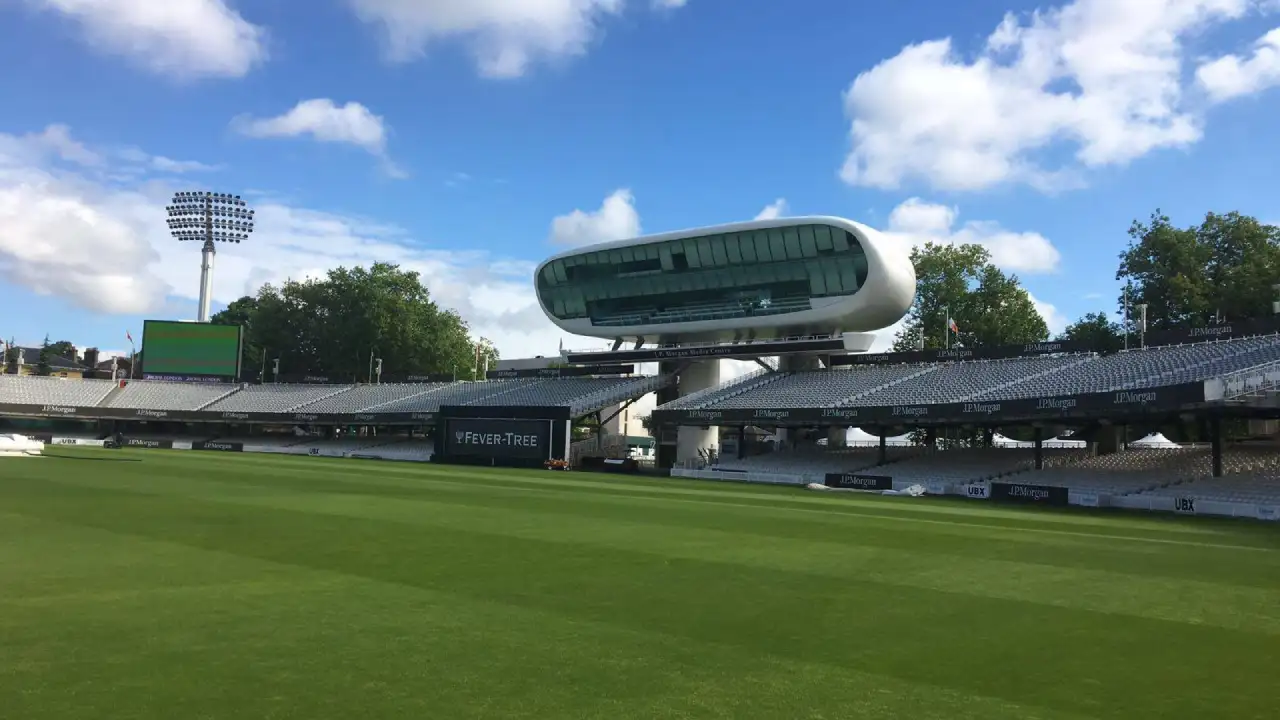
The Lord's Cricket Ground has a 8ft slope |courtesy - Lord's Cricket GRound
KEY HIGHLIGHTS
- India and England will play each other at Lord's in third Test
- Lord's is among cricket's oldest ground
- The ground has a unique slope in the outfiled
The third Test of the 2025 Anderson-Tendulkar Trophy between India and England will be a blockbuster clash as the five-match series is on a knife-edge, as it is level 1-1. Moreover, the game will be played at the iconic Lord's Cricket Ground, which marks a significant moment for players from both teams.
While the ground is widely regarded as 'the home of cricket' and contains significant historical and cultural significance, it is also a special place on the cricket calendar due to its recentgular shape but moreover the presence of a slope on the ground, which is rare and almost unique to the ground, situated in London.
What Is The Slope And Why Is It So Significant
The slope at the Lord's cricket ground is described as a 'geographical gradient' and runs from the north to the south ends of the ground. It is said to have a drop of more than eight feet (2.5m). The slope is situated from the Grandstand to the Tavern side.
The slope has been present at the venue ever since the current site was built in 2014. The land of the ground was previously near a duck pond on a hill at St. John's , Wood, which led to the slope emerging on the ground with the stadium built around it.
While there have been calls to level the slope in recent years, the move has not taken place yet despite the outfield being replaced in 2002, as well as the ground constantly undergoing renovation with new stands being added.
The Slope's Big Impact On Cricket
The Slope just does not give the ground a unique characteristic, but has a big impact on the sport with both batters and bowlers affected.
For bowlers bowling from the nursery end, the slope helps in taking the ball away from the right-hander, while for a bowler bowling from the pavilion end, it helps in in-swinging the delivery. For left-handers, the case becomes the opposite in both cases. This also ensures that the ground has something for bowlers to play with even on flat tracks with no assistance.
The above case is usually for a right-handed pacer, but it is historically known as a place where left-arm pacers enjoy great success as the slope makes it tougher for batters especially righties to judge the movement.
"100%. You’ve got to be very careful depending which end you bat whether your head’s falling over down the hill. Sometimes batters find it even more of a struggle than bowlers to adjust and work out their position on the crease. Certainly the first couple of times, we’ve seen batters fall over a lot from batting at the Pavilion End. It’s just something you have to slightly adjust in either your feet or your centre of gravity or your weight position. It’s tricky for both batters and bowlers when they first come there," ex-England cricketer Tim Murtagh explained how the slope makes life tough for batters in an interaction with ECB.
